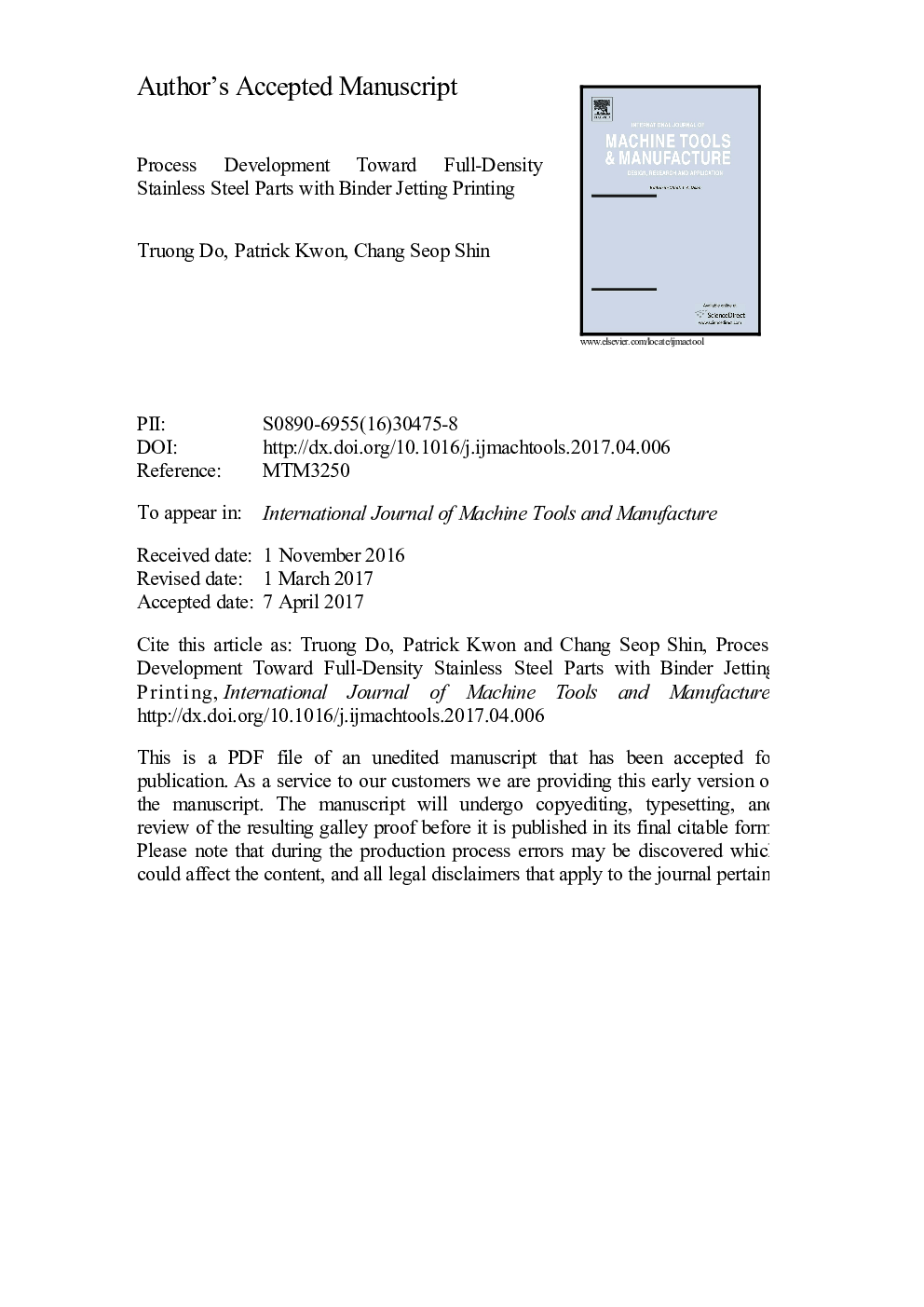| کد مقاله | کد نشریه | سال انتشار | مقاله انگلیسی | نسخه تمام متن |
|---|---|---|---|---|
| 5015714 | 1464473 | 2017 | 24 صفحه PDF | دانلود رایگان |
عنوان انگلیسی مقاله ISI
Process development toward full-density stainless steel parts with binder jetting printing
ترجمه فارسی عنوان
توسعه فرآیند به سوی قطعات فولادی ضدزنگ با تراکم پلاستیکی با نوار نقاله
دانلود مقاله + سفارش ترجمه
دانلود مقاله ISI انگلیسی
رایگان برای ایرانیان
کلمات کلیدی
چاپ جت پرینت، افزودنیهای پخت ضخامت جوش خلاء، بسته بندی پودر،
موضوعات مرتبط
مهندسی و علوم پایه
سایر رشته های مهندسی
مهندسی صنعتی و تولید
چکیده انگلیسی
In the Additive Manufacturing (AM) community, the binder jet printing (BJP) process is known to produce parts not suitable for most structural applications due to the insufficient consolidation of the powder in the finished part. A new processing protocol for the BJP is presented to reach near full density and better surface finish for stainless steel (SS) parts. Two main modifications from the standard BJP processing are (1) the use of the mixtures of various powders and (2) the adaptation of a full sintering cycle in a vacuum furnace. Two distinct average particle sizes of SS powder were used to improve the packing density in the printing stage. Improving the packing density of the printed powder helps to consolidate the powder better and to reduce the shape distortion in the final parts. More importantly, an extremely small amount of the sintering additive was added to enhance the densification, which reduces the sintering time and temperature. In particular, up to 0.5 wt% of boron compounds as sintering additives were used to achieve a near full density in the final part. Thus, the starting powder, consisting of two distinct SS powders and sintering additive, is mixed before building a part in a layer-by-layer fashion. After completing the printing process with a binder phase, the printed powders are cured and the binder phase is burned out at 460 °C before sintering at 1250 °C for 6 h in a vacuum furnace to reach near-full densities (up to 99.6%). A subtle difference between SS 420 and SS 316 was evident because the enhanced oxidation during the binder burnout cycle on SS 316 due to a higher surface area of the SS 316 powder used in the experiment. The main contribution of this work is to provide the BJP process an important ability to fully consolidate the powders under an isothermal condition, which enable us to produce the final parts without residual stresses.
ناشر
Database: Elsevier - ScienceDirect (ساینس دایرکت)
Journal: International Journal of Machine Tools and Manufacture - Volume 121, October 2017, Pages 50-60
Journal: International Journal of Machine Tools and Manufacture - Volume 121, October 2017, Pages 50-60
نویسندگان
Truong Do, Patrick Kwon, Chang Seop Shin,
